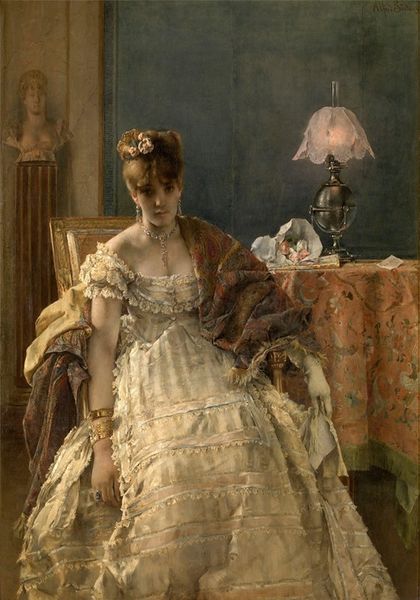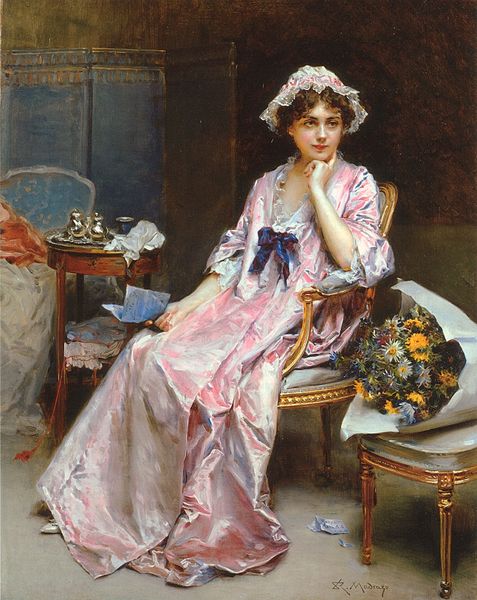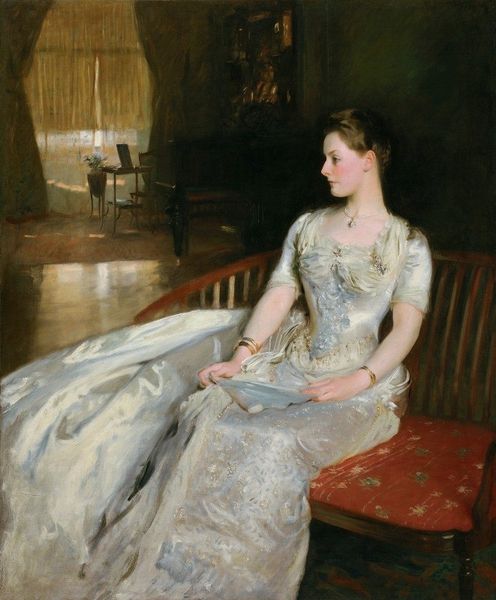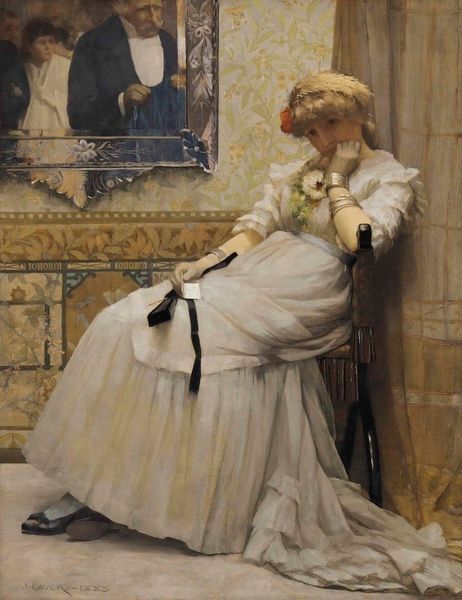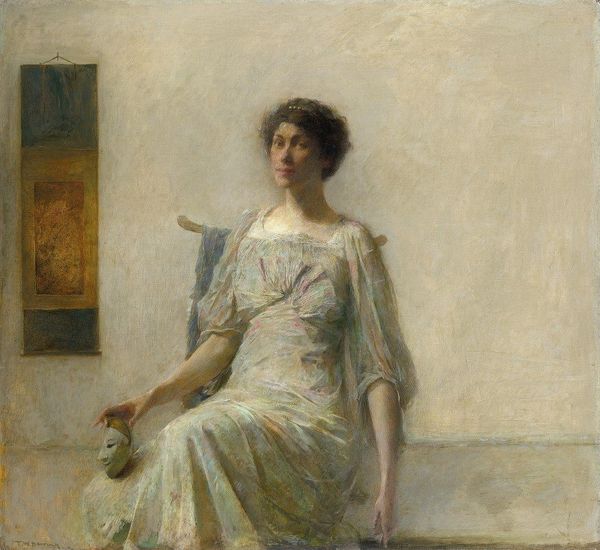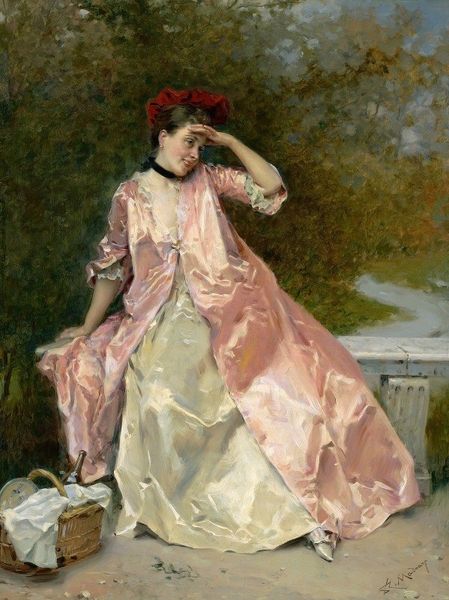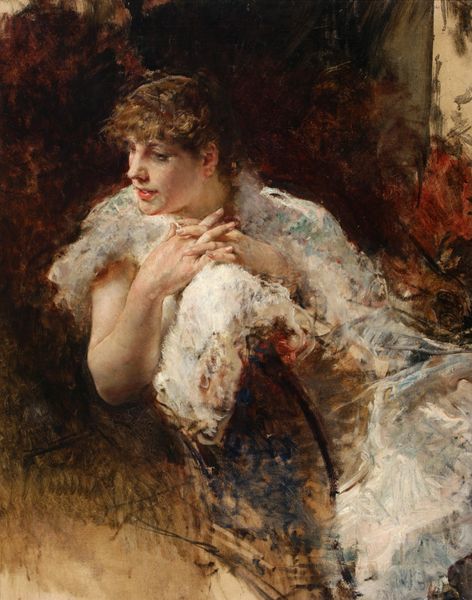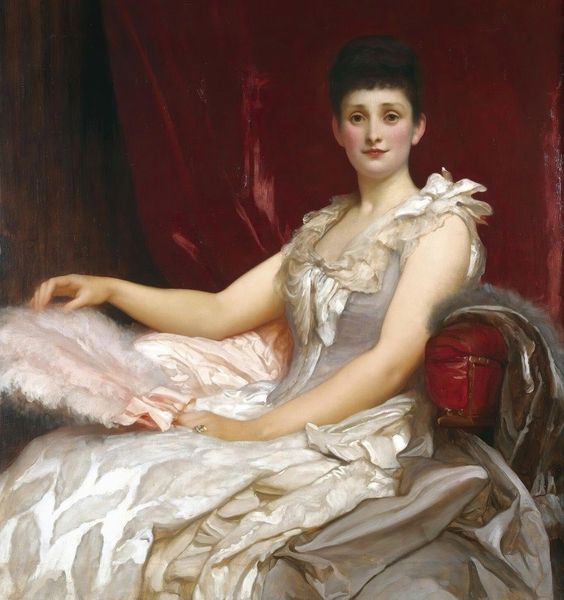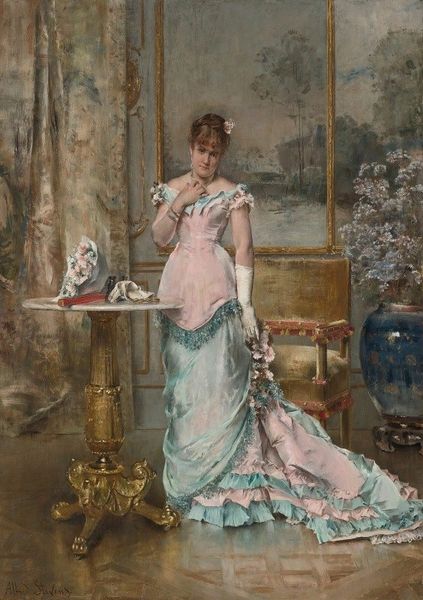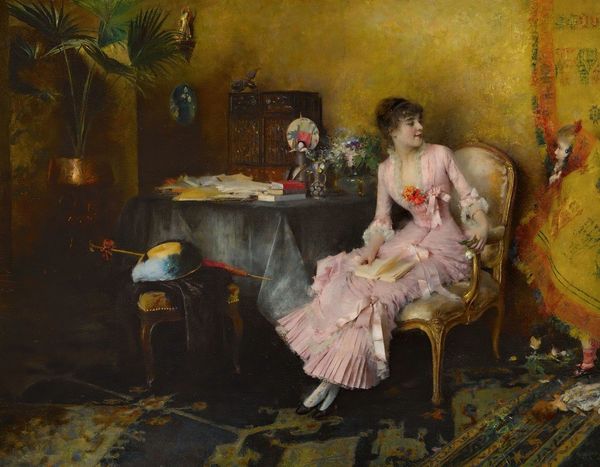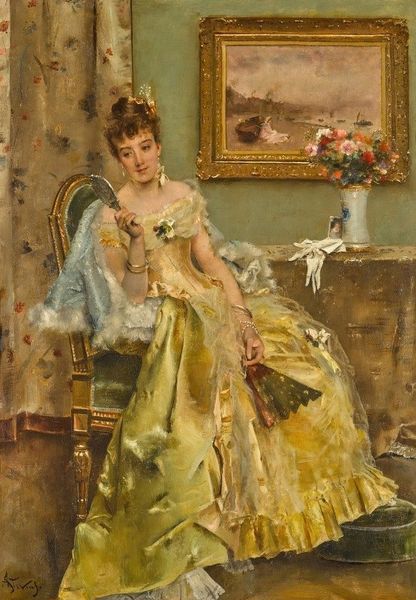
Dimensions: 34 3/4 x 25 1/2 in. (88.27 x 64.77 cm) (canvas)48 x 38 1/2 x 3 1/2 in. (121.92 x 97.79 x 8.89 cm) (outer frame)
Copyright: Public Domain
Editor: So, here we have Douglas Volk’s “After the Reception,” created in 1887. It’s an oil painting, and honestly, she looks a little… melancholy for a bride. What can you tell me about it? Curator: The apparent melancholy you perceive is precisely the tension Volk captures. Consider the social context: Marriage in 1887 wasn't always about personal happiness but often about economic stability and social standing. Is her sadness personal or representative of the pressures placed on women? Editor: That's a great point! It makes you wonder if she had any say in the marriage. I hadn't thought about it in those terms. How would viewers at the time have interpreted the painting? Curator: Likely through a lens of accepted social norms, emphasizing the woman's duty. Romanticism, still influential, could evoke sympathy for her "sacrifice." However, subversive readings would exist among circles advocating for women's rights. Editor: It is really interesting to consider these multiple meanings. Is that why her discarded shoes and flowers are down on the floor, in this state of seeming chaos, suggesting some element of disarray beneath the surface of tradition? Curator: Precisely. Details like the discarded shoes subtly undermine a simple, romantic narrative, offering critique beneath the surface. These everyday objects become political symbols when viewed through that critical lens. They could represent all she has given up, literally discarded. Editor: This has been very enlightening. It is an interesting example of genre painting in service to Romanticism while quietly engaging social discourse! Curator: Absolutely. Considering its place within artistic movements and wider social and political dialogues transforms our understanding of the artwork. There's always more to unpack.
Comments
minneapolisinstituteofart almost 2 years ago
⋮
The celebration over, the weary bride rests on a settee, one satin glove dropped on the floor. Caroline Thompson is the bride; the artist, Douglas Volk, was a friend of her parents. At one sitting for this painting, Volk adjusted the neck of the gown to reveal more of Caroline’s shoulder. As the young woman blushed, her mother remarked, “Now, my dear, Mr. Volk is an artist and he only thinks of you as he would a vase of flowers.” Mrs. Thompson’s esteem for Volk was warranted. He had trained in Italy and France, and in 1886 he became the first director of the Minneapolis School of Fine Arts, now the Minneapolis College of Art and Design. Conservation of this picture was made possible by a generous contribution from Al and Dena Naylor through the Art Champions program.
Join the conversation
Join millions of artists and users on Artera today and experience the ultimate creative platform.

